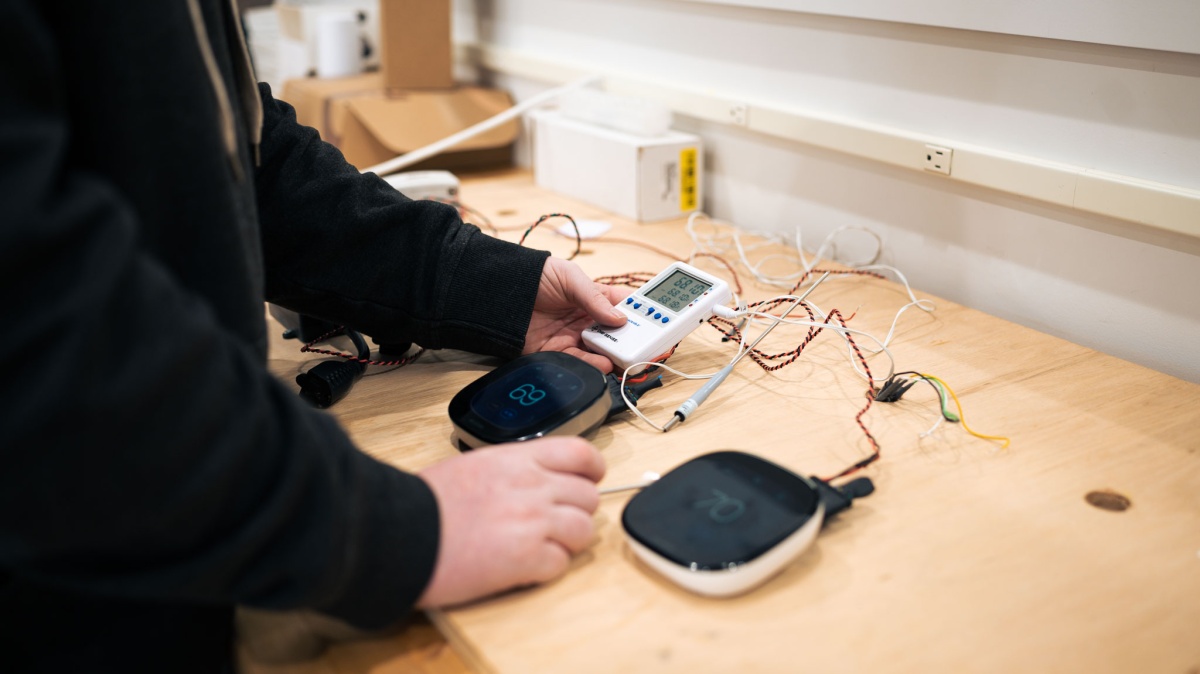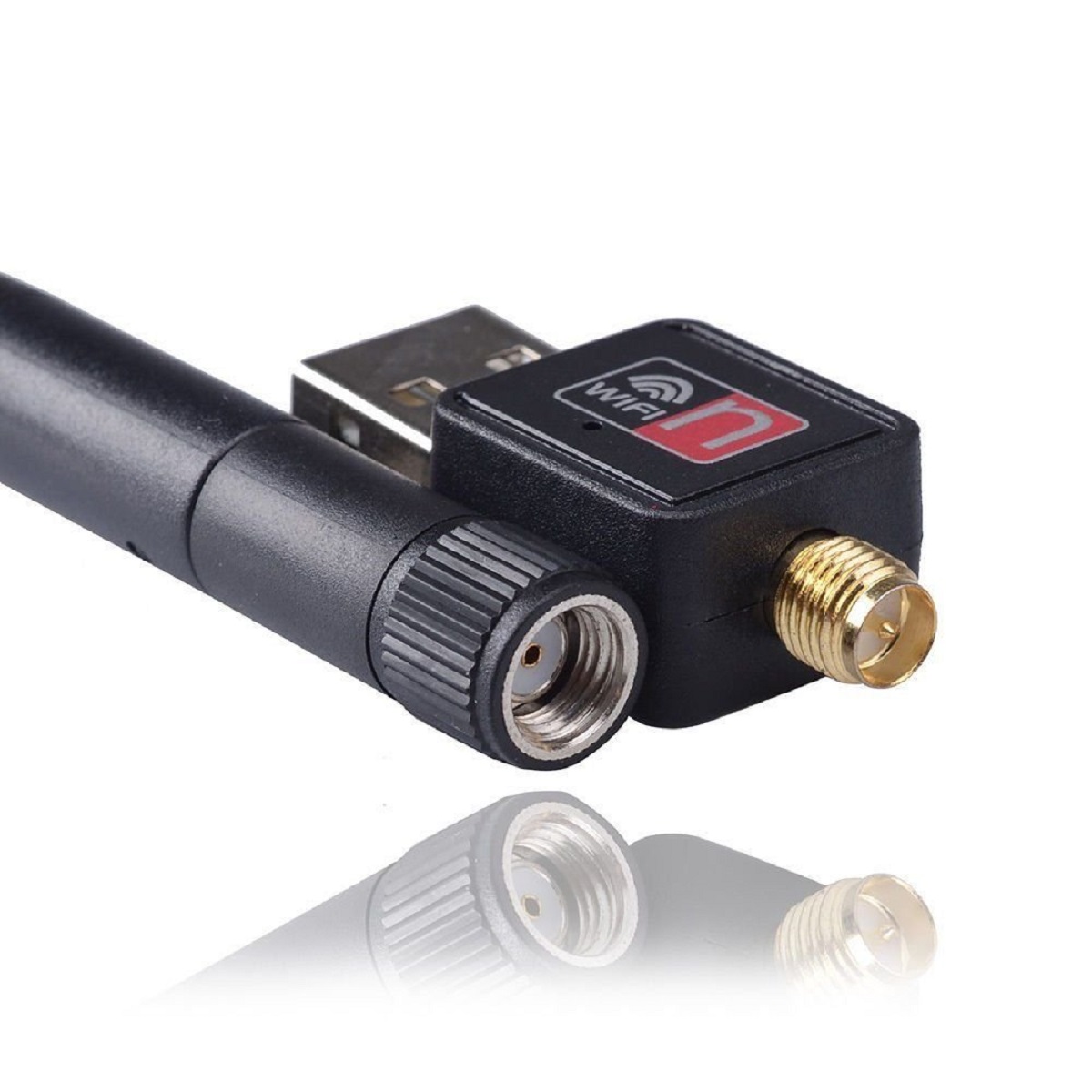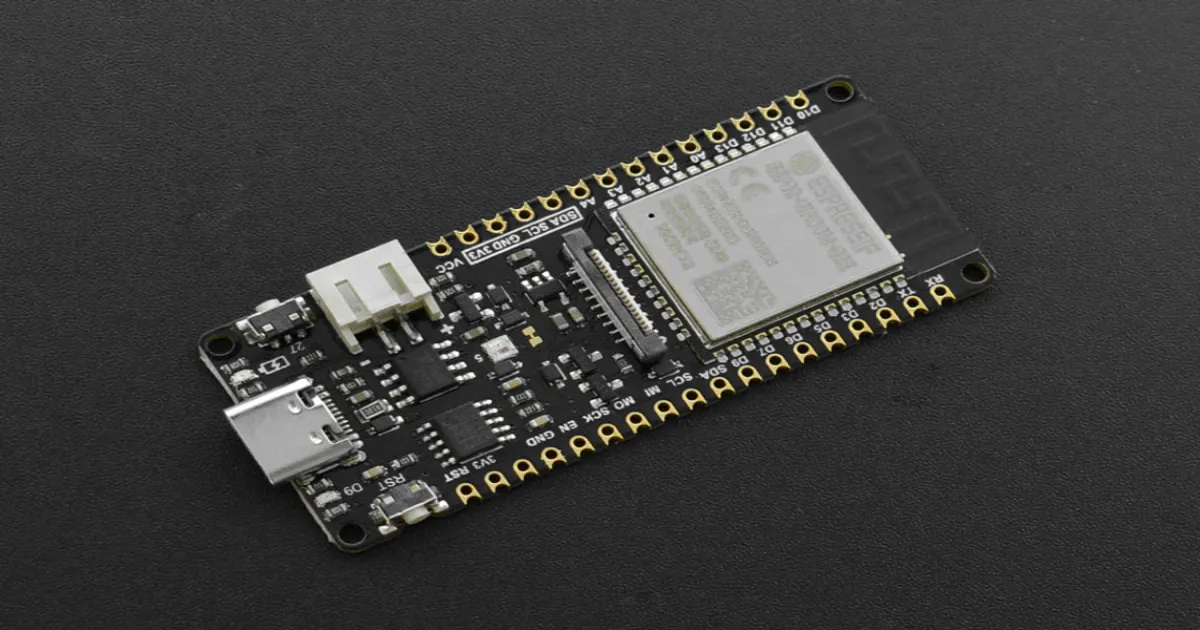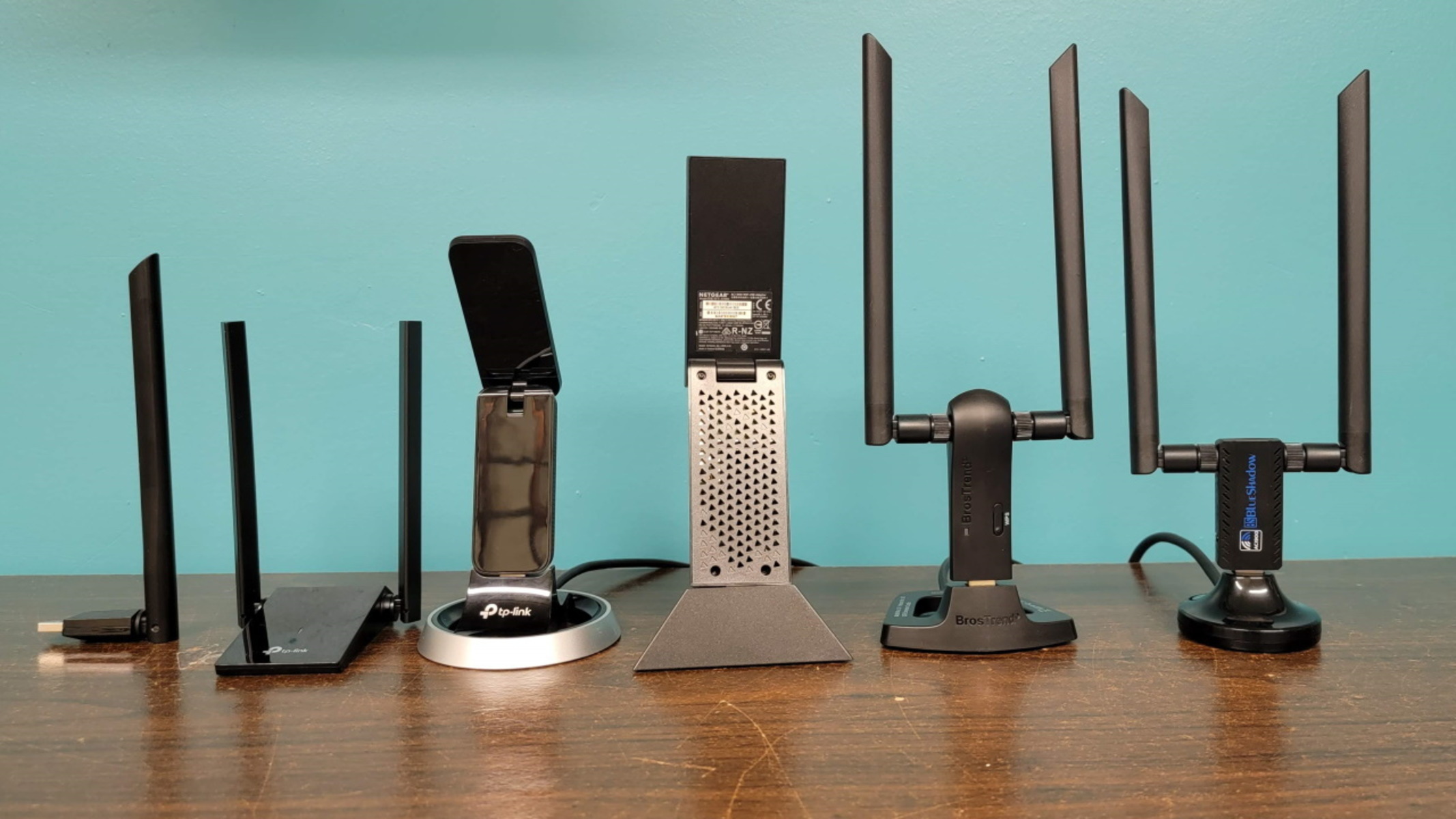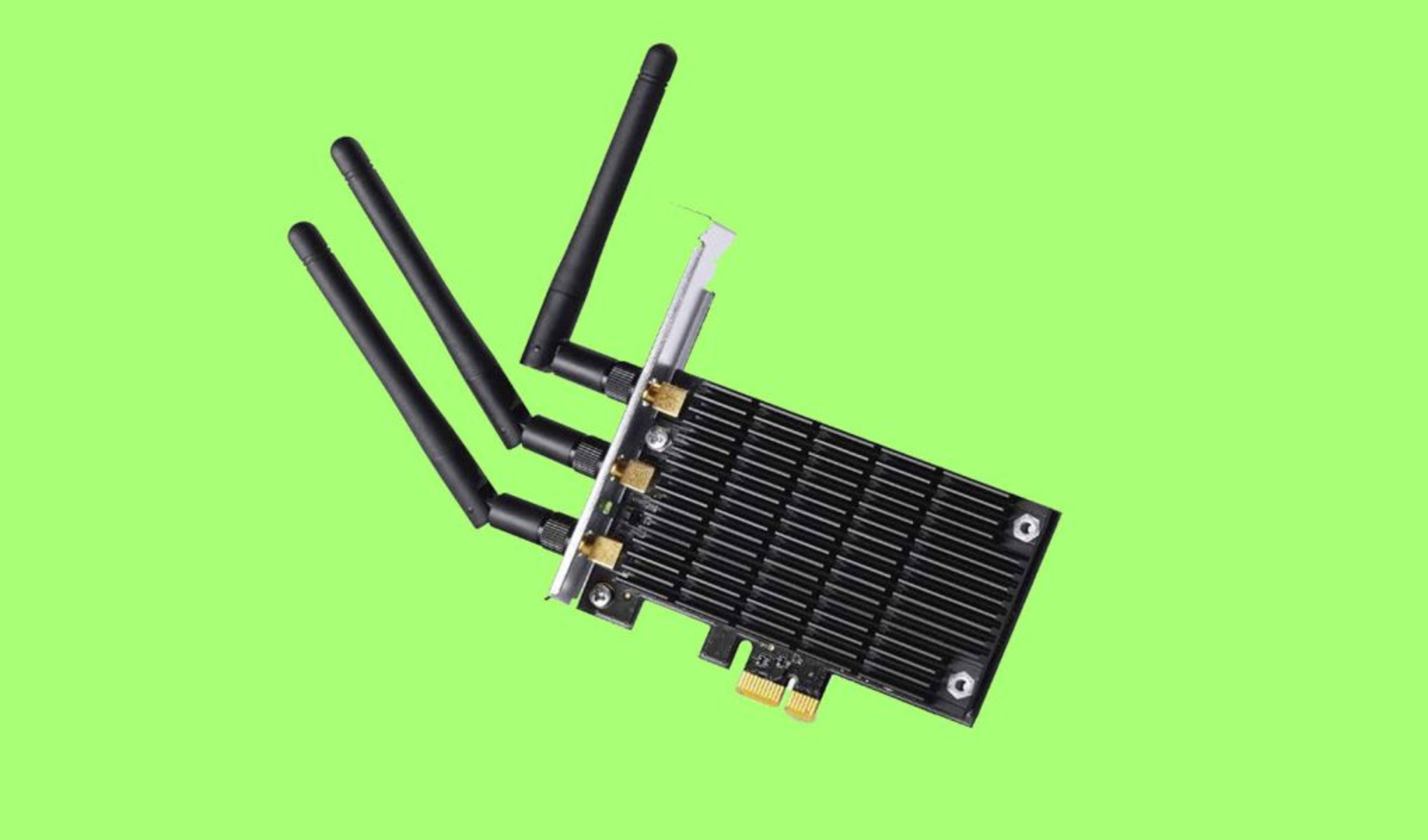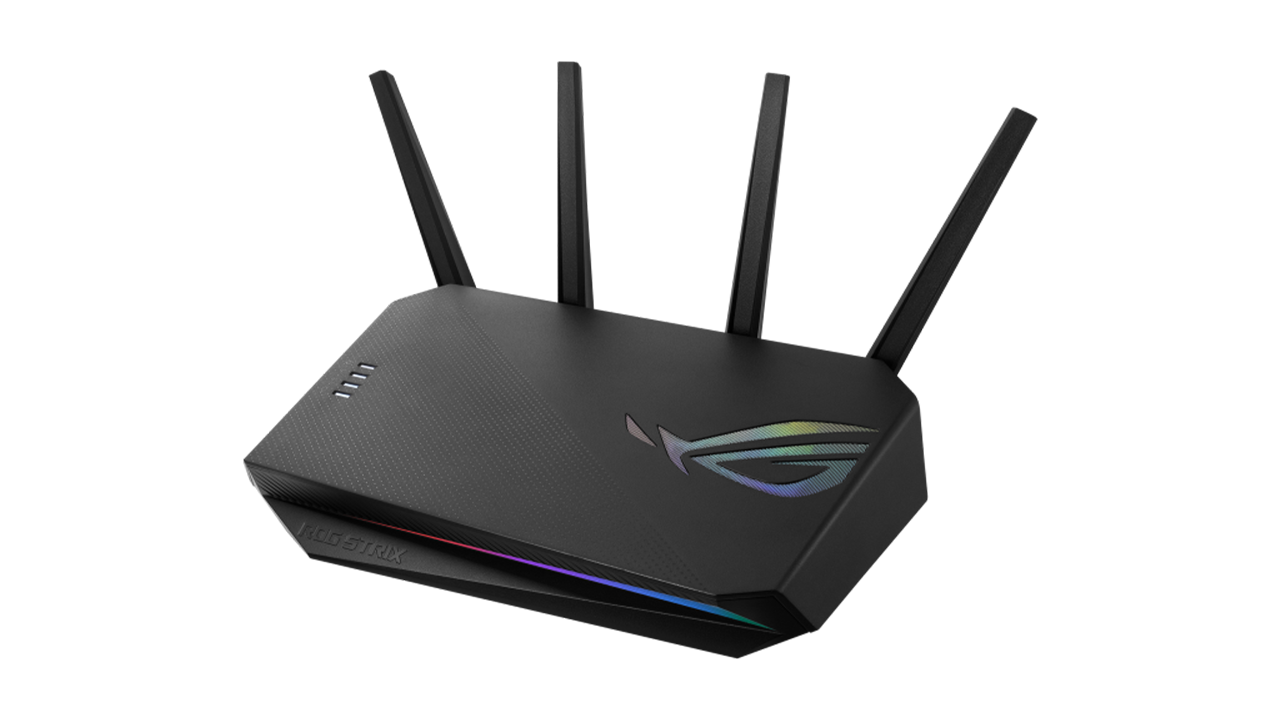Introduction
Welcome to the digital age, where having a stable and fast internet connection is essential for our day-to-day activities. Without it, we would be unable to seamlessly communicate, work, stream our favorite shows, or stay connected with friends and family. One crucial component of our internet connection is WiFi, the wireless technology that allows us to connect to the world wide web without the need for physical cables.
If you are like most people, you have probably noticed a series of numbers or letters next to your WiFi network name, commonly referred to as the SSID (Service Set Identifier). These characters are not just random; they actually hold valuable information about your WiFi connection. Among these characters, you may have come across a peculiar number, namely the “6.” But what does it mean? Why is it there? In this article, we will delve into the significance of the “6” on your WiFi network and provide you with insights into its meaning.
To understand why the number “6” appears on your WiFi network, it is essential first to grasp the basics of WiFi technology. So, let’s explore what WiFi is and how it works.
Understanding the 6 on your WiFi
Have you ever wondered what the number “6” next to your WiFi network name signifies? Well, the truth is, it’s not as mysterious as it may seem. The “6” is actually a channel number that corresponds to a specific radio frequency band used by your WiFi network.
WiFi networks operate on different frequency bands within the radio spectrum. The most common frequencies used for WiFi are 2.4 GHz and 5 GHz. These frequencies are divided into several channels, each representing a specific range of frequencies. The number “6” represents one of these channels in the 2.4 GHz frequency band.
But why are there different channels, and what is their significance? The availability of different channels allows multiple WiFi networks in a given area to operate simultaneously without interfering with each other. By using different channels, neighboring networks can coexist without causing signal congestion or performance degradation.
The number “6” is just one of the available channels within the 2.4 GHz frequency band. Other common channels in this band include 1, 11, and 14, depending on the specific country’s regulations. Each channel represents a slightly different range of frequencies, which can impact the signal strength and overall performance of your WiFi network.
So, the next time you see the number “6” next to your WiFi network name, know that it represents the specific channel your network is operating on. It doesn’t necessarily mean that it is better or worse than other channels; it’s just a unique identifier for your network’s frequency band.
Now that we’ve established what the “6” means let’s dive deeper into the functioning of WiFi technology and how it operates to provide us with seamless wireless internet connectivity.
What is WiFi?
WiFi, short for Wireless Fidelity, is a wireless networking technology that allows devices to connect to the internet and communicate with each other without the use of physical cables. It has become an essential part of our everyday lives, enabling us to access the internet from various devices, such as smartphones, laptops, tablets, and smart home devices.
At its core, WiFi is based on the IEEE 802.11 standard, which defines the protocols and specifications for wireless network communications. It uses radio waves to transmit and receive data between devices within a specific range. This range can vary depending on the power of the WiFi router and any physical obstructions that may interfere with the signal.
WiFi technology offers several advantages over traditional wired connections. First and foremost, it provides us with the freedom to move around and stay connected to the internet without being tethered to a physical connection. Whether you’re lounging in the living room, working in a coffee shop, or relaxing in the backyard, WiFi allows you to access the internet from anywhere within the coverage area.
Moreover, WiFi enables multiple devices to connect to the same network simultaneously. This allows for seamless sharing of resources, such as printers, files, and media streaming, among multiple devices without the need for additional cables.
WiFi networks are typically set up using a wireless router, which acts as the central hub for connecting devices to the internet. The router receives data from the internet service provider (ISP) and transmits it wirelessly to devices within range. It also provides security features, such as password authentication and encryption, to protect your network and data from unauthorized access.
In summary, WiFi is a wireless networking technology that allows devices to connect to the internet and communicate with each other without the need for physical cables. It offers flexibility, convenience, and the ability to connect multiple devices to the same network simultaneously. Now that we understand the basics of WiFi, let’s explore how it actually works.
How does WiFi work?
Understanding how WiFi works can provide us with insights into how our devices connect to the internet and exchange data wirelessly. At its core, WiFi technology utilizes radio waves to transmit and receive data between devices. To simplify the process, let’s break it down into a few key steps.
1. Signal Transmission
WiFi signals are transmitted by a wireless router or access point. These devices convert the internet data received from your internet service provider (ISP) into radio waves. The router then broadcasts these radio waves, also known as the WiFi signal, throughout a specific area or coverage range.
2. Device Connection
When your device, such as a smartphone or laptop, is within the range of a WiFi signal, it can detect the available networks. Once you select and connect to a specific WiFi network, your device establishes a connection with the wireless router or access point.
3. Authentication and Encryption
To ensure secure communication between your device and the WiFi network, authentication and encryption protocols are employed. These protocols involve verifying the identity of your device and encrypting the data being transmitted, preventing unauthorized access to your network and protecting your privacy.
4. Data Exchange
Once your device is connected to the WiFi network, it can start exchanging data with other connected devices or the internet. Your device sends data in the form of packets, which are small units of information. These packets are transmitted through the WiFi signal and received by the router or access point, which then forwards them to the intended destination, such as a website server.
5. Internet Access
The router acts as a gateway between your devices and the internet. It receives data packets from the internet, routes them to the appropriate device within the network, and relays the responses back to the internet. This continuous back-and-forth communication allows you to access websites, stream media, send emails, and perform various online activities.
Overall, WiFi technology enables wireless communication by converting data into radio waves and transmitting them through a WiFi signal. Your device connects and authenticates with the wireless router, allowing for secure data exchange over the network. This process allows you to access the internet and engage in a wide range of online activities conveniently from your wireless devices.
What do the numbers on WiFi mean?
When you view the available WiFi networks on your device, you may notice a combination of numbers and letters next to each network name. These characters represent the SSID (Service Set Identifier), which is a unique identifier for each WiFi network. The SSID helps distinguish one network from another, allowing your device to connect to the desired network.
While the SSID can consist of any combination of characters, including letters, numbers, and symbols, the numbers on WiFi networks often have specific meanings. Let’s explore some of the common numbers you may encounter and what they signify:
1. Channel Numbers
As mentioned earlier, WiFi networks operate on different channels within the available frequency bands, such as 2.4 GHz and 5 GHz. The number displayed on the WiFi network can indicate the specific channel that the network is using to transmit and receive data wirelessly. For example, you might see “WiFiNetwork1” or “WiFiNetwork6”, where the numbers represent the channel number within the frequency band.
2. Security Modes
In some cases, the numbers on WiFi networks can indicate the security mode used by the network. For example, you might come across network names like “WiFiNetwork_WPA2” or “WiFiNetwork_WEP”. These numbers, such as “WPA2” or “WEP,” represent the security protocols employed by the network to protect your data from unauthorized access.
3. Network Versions or Types
Occasionally, the numbers on WiFi networks can represent the version or type of the network being broadcasted. For example, you might see “WiFiNetwork_802.11n” or “WiFiNetwork_802.11ac”, where “802.11n” and “802.11ac” signify the respective WiFi standards supported by the network.
4. Manufacturer or Device Information
Sometimes, the numbers on WiFi networks can indicate the manufacturer or the device model associated with the network. This can be useful in identifying networks provided by specific companies or devices. For example, you might encounter network names like “WiFiNetwork_Linksys” or “WiFiNetwork_Netgear”, where the numbers in the SSID point to the manufacturer or the device.
While these are some common interpretations of the numbers on WiFi networks, it’s essential to note that the characters in the SSID can be customized by the network owner. So, the meaning of the numbers may vary based on individual preference or network configurations.
In summary, the numbers displayed on WiFi networks can indicate various aspects such as channel numbers, security modes, network versions, or manufacturer/device information. These numbers can provide insights into the network’s characteristics and help you identify and connect to the desired WiFi network easily.
Understanding the significance of the 6
Now that we know the number “6” on your WiFi network represents the specific channel your network is operating on, let’s explore its significance in more detail. While the specific channel number itself does not inherently carry any meaning, understanding its implications can help optimize your WiFi performance.
1. Channel Interference
WiFi networks operating on the same or overlapping channels can cause interference. This phenomenon occurs when multiple networks in the vicinity share the same frequency range, resulting in signal congestion and decreased performance. By selecting an uncommon channel, such as channel “6”, you can potentially minimize interference from neighboring networks operating on popular channels.
2. Channel Overlaps
WiFi channels in the 2.4 GHz frequency band have a tendency to overlap, meaning that the signals from neighboring channels can interfere with each other. The number “6” falls within a range that is less prone to overlap compared to other channels like 1 or 11. This can reduce the likelihood of signal interference and provide a relatively clear channel for your WiFi network.
3. Range and Penetration
WiFi signals can vary in their range and ability to penetrate through physical obstacles. While channels themselves do not directly influence signal range or penetration, certain channels might be more prone to interference from other devices using the same frequency range, such as cordless phones or baby monitors. By using a less crowded channel like “6”, you may experience better range and signal penetration compared to heavily congested channels.
4. Country-specific Regulations
It’s important to note that channel availability may vary based on different countries’ regulations. In some regions, channel 6 might be recommended or designated as a standard, while in others, it may differ. It is crucial to check your local regulations and consider the specific guidelines provided by the regulatory authorities.
Ultimately, while the number “6” itself does not hold inherent significance, selecting an optimal channel for your WiFi network can lead to improved performance and reduced interference. To determine the most suitable channel for your network, you can use WiFi analyzers, network management software, or consult with a professional IT technician who can offer insights based on your specific environment.
In the next section, we will explore why your WiFi may be named with a “6” and the factors that can influence the number displayed on your WiFi network.
Why is my WiFi named with a 6?
If your WiFi network is named with a “6” in the SSID, it means that the network owner or administrator has deliberately chosen to assign the network to operate on channel 6 within the 2.4 GHz frequency band. This decision could be based on various factors, including optimizing network performance, minimizing interference, or following recommended guidelines by regulatory authorities.
Optimizing Network Performance
By selecting channel 6, the network owner may have determined that it provides the best balance between signal strength, range, and overlap with neighboring networks. It offers a compromise between popular channels like 1, 11, or 14, which are more susceptible to interference and congestion. Choosing channel 6 can help distribute WiFi traffic more evenly across the available channels and potentially enhance overall network performance.
Minimizing Interference
The choice of channel 6 can also be influenced by the desire to minimize interference from neighboring WiFi networks. Most WiFi routers come preconfigured to automatically select a channel, often channel 6 or 11, based on the least congested options at the time of setup. By setting the network to channel 6, the network owner may aim to avoid overlapping with routers on channels 1 or 11, reducing the likelihood of performance degradation caused by interference.
Regulatory Guidelines and Standards
In some countries, regulatory authorities designate specific frequency bands and channels for WiFi use. Channel 6, along with channels 1 and 11, is widely accepted and approved for use in many regions. It falls within the recommended range for optimal WiFi coverage and tends to have fewer restrictions and interference concerns compared to other channels. Therefore, network owners may choose channel 6 to comply with the standard regulations and ensure seamless network operation within the approved guidelines.
It is important to note that while channel 6 is a popular choice, it may not be the best option in every situation. Factors such as the environment, the presence of nearby networks, and the WiFi equipment being used can influence the effectiveness of channel selection. For optimal performance, it is recommended to analyze your WiFi environment and consider factors like signal strength, interference levels, and the available channels to determine the most suitable option.
In the next section, we will explore the factors that can affect the number displayed on your WiFi network and how you can improve your WiFi signal strength.
What factors affect the number displayed on WiFi?
The number displayed on your WiFi network, such as the “6” in the SSID, is determined by several factors including the network configuration, regulatory guidelines, and the surrounding wireless environment. Let’s take a closer look at these factors:
1. Network Configuration
The number displayed on your WiFi network can be manually set by the network owner or automatically assigned by the router. In some cases, routers come preconfigured with default channel settings, which might result in numbers like “6” appearing in the SSID. Network administrators often choose specific channel numbers based on network optimization criteria, interference considerations, or regulatory guidelines for their specific region.
2. Regulatory Guidelines
Regulatory authorities in different countries have guidelines specifying which channels are allowed for WiFi use. These guidelines ensure that WiFi networks operate within designated frequency bands to minimize interference and ensure coexistence with other wireless devices. The specific channels that are permitted or recommended can vary based on the country or region. Therefore, the number displayed on your WiFi network may be influenced by the regulatory channels approved for use in your area.
3. Wireless Environment
The surrounding wireless environment can have a significant impact on the number displayed on your WiFi network. If there are multiple WiFi networks in close proximity, the available channels may be congested or already in use. In such cases, routers may automatically assign a channel number that is less crowded, such as “6”, to minimize interference from neighboring networks. Interference from other devices operating on similar frequencies, including cordless phones or baby monitors, can also affect the selection of the channel and the number displayed on your WiFi network.
4. Channel Optimization
Network administrators may manually select a specific channel, such as channel 6, to optimize the network’s performance and minimize interference. By analyzing the wireless environment, examining signal strengths, and conducting spectrum analysis, they can choose a channel that offers the best balance between signal quality, range, and interference levels. The chosen channel can influence the number displayed on your WiFi network as it indicates the specific channel being used for wireless communication.
Remember that the specific number displayed on your WiFi network, such as “6,” is not inherently superior or inferior to other numbers. The key is to consider the available channels, interference levels, signal strengths, and regulatory guidelines to select the most appropriate channel for optimal performance and reduced interference. In the next section, we will explore some strategies to improve your WiFi signal strength for a better wireless experience.
How can I improve my WiFi signal strength?
A weak or unreliable WiFi signal can be frustrating, especially when it disrupts your internet experience. However, there are several steps you can take to improve your WiFi signal strength and enhance the performance of your wireless network. Here are some tips to consider:
1. Position your router centrally
The placement of your WiFi router plays a crucial role in signal strength. Position it centrally within your home or office to ensure maximum coverage. Avoid placing it near walls, appliances, or other physical obstructions that can obstruct the WiFi signal. Ideally, place the router at an elevated position to help the signal propagate evenly throughout the space.
2. Reduce interference
Wireless interference from other devices, such as cordless phones, microwaves, or Bluetooth devices, can weaken your WiFi signal. Keep your router away from such devices, especially those that operate on similar frequencies. Additionally, try changing the channel on your router to a less congested one to minimize interference from other nearby WiFi networks.
3. Adjust your antennas
If your router has adjustable antennas, consider positioning them at different angles to achieve the best signal coverage. Experiment with vertical, horizontal, or diagonal orientations to optimize signal reception. In some cases, upgrading to high-gain antennas can provide better signal strength and range.
4. Update firmware and drivers
Ensure that your router’s firmware is up-to-date, as newer firmware versions often include bug fixes, performance enhancements, and security updates. Similarly, updating the network drivers on your devices can help improve compatibility, stability, and overall WiFi performance.
5. Secure your network
Enabling security protocols, such as WPA2 (WiFi Protected Access II), on your WiFi network is essential not just for privacy, but also for optimal performance. Unauthorized devices connected to your network can use valuable bandwidth and impact your signal strength. Implement strong and unique passwords to prevent unauthorized access.
6. Utilize WiFi extenders or mesh systems
If you have areas in your home or office with weak WiFi coverage, consider using WiFi extenders or mesh systems. These devices can help amplify and extend your WiFi signal to reach areas with poor coverage, improving signal strength and overall network performance.
7. Reduce bandwidth usage
Bandwidth-intensive activities, such as streaming 4K videos or downloading large files, can strain your WiFi network and impact signal strength. Limiting simultaneous bandwidth-heavy activities or scheduling them during off-peak hours can help alleviate congestion and improve signal performance.
By following these recommendations, you can significantly improve your WiFi signal strength and enhance your wireless network performance. Experiment with different strategies to find the most effective approach for your specific environment and enjoy a smoother and more reliable internet experience.
Conclusion
In conclusion, understanding the numbers displayed on your WiFi network can provide valuable insights into your network’s configuration, channel selection, and performance optimization. The number “6” often represents the specific channel your WiFi network is operating on within the 2.4 GHz frequency band.
WiFi technology has revolutionized our ability to connect wirelessly and access the internet from various devices. It relies on radio waves to transmit data between devices within a specific range. By selecting the appropriate channel, WiFi networks can coexist without interfering with each other, ensuring optimal performance and minimizing signal congestion.
Factors such as regulatory guidelines, network configuration, and the wireless environment can influence the number displayed on your WiFi network. Network administrators carefully consider these factors to optimize performance, minimize interference, and adhere to regional regulations.
If you find that your WiFi signal strength is weak, there are steps you can take to improve it. Proper router placement, reduction of interference, firmware updates, and utilizing WiFi extenders or mesh systems can all contribute to enhancing signal strength and overall network performance.
Remember, the number displayed on your WiFi network does not inherently indicate superiority or inferiority. It is important to analyze the wireless environment, consider interference levels, and select the most suitable channel for your specific needs.
By implementing these strategies and optimizing your WiFi network, you can enjoy faster, more reliable internet connectivity, seamless streaming, and a smoother online experience for all your wireless devices.









